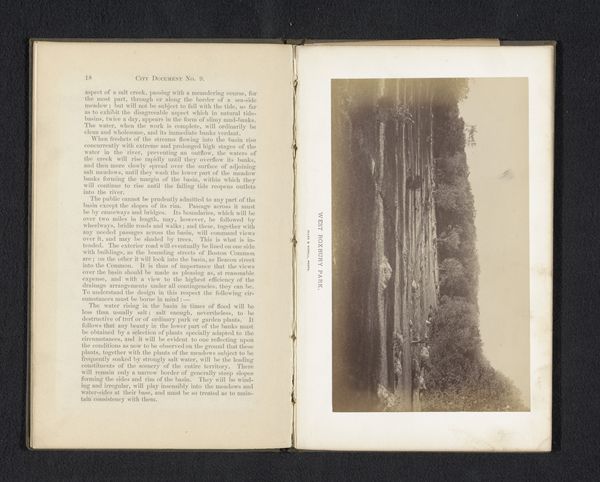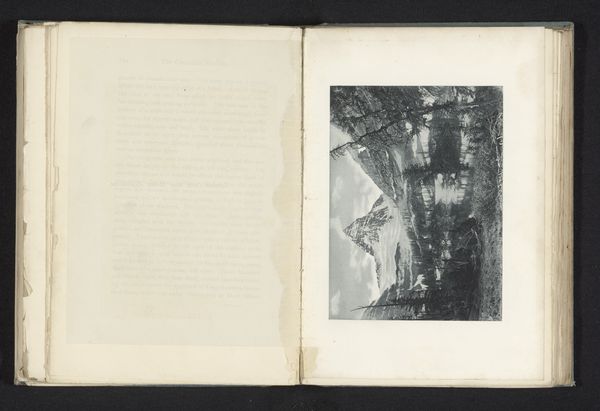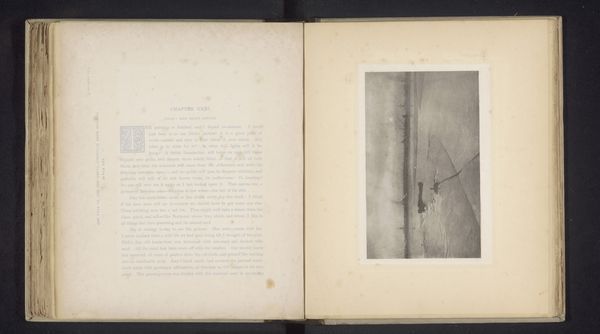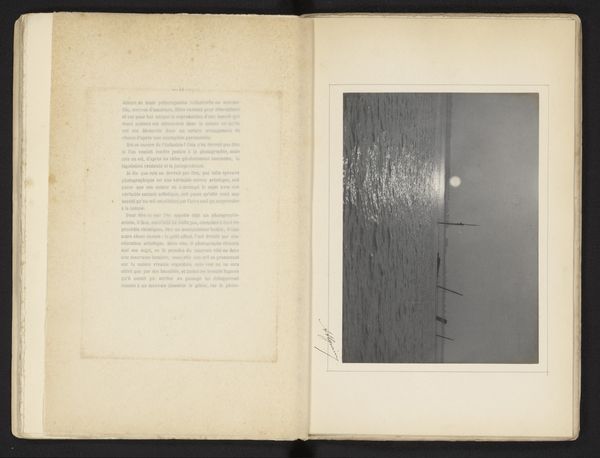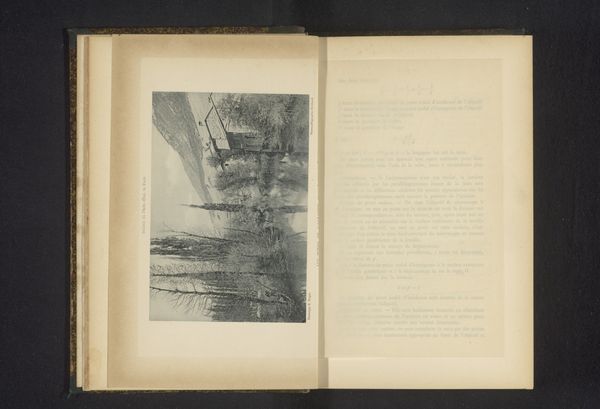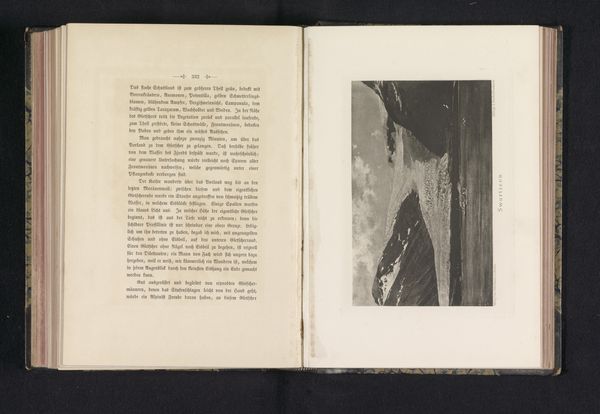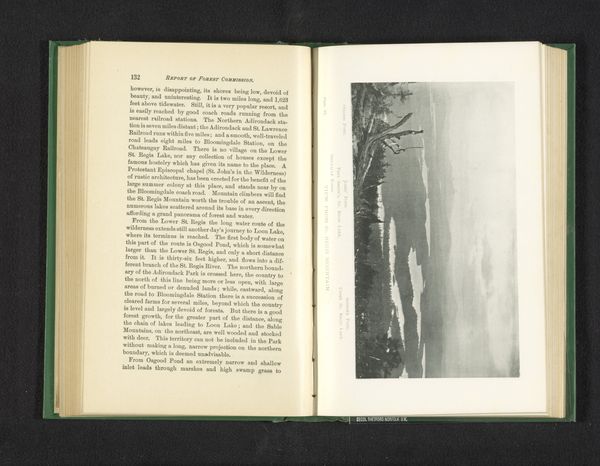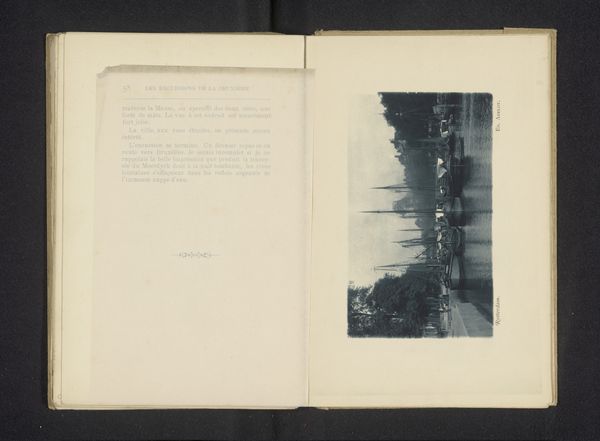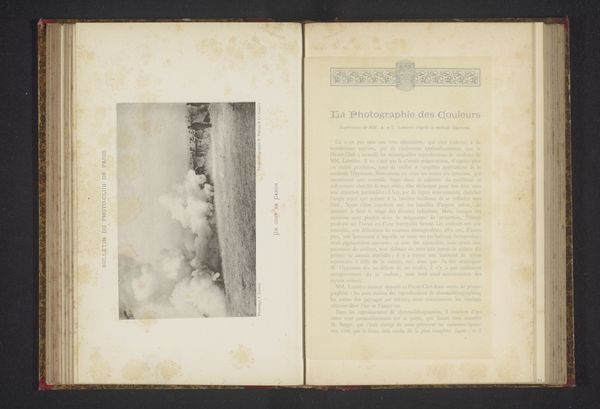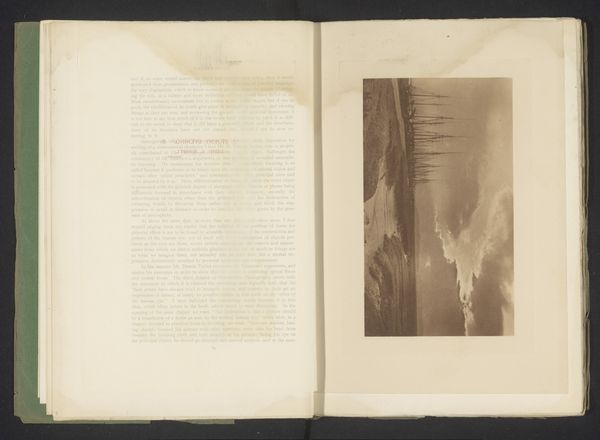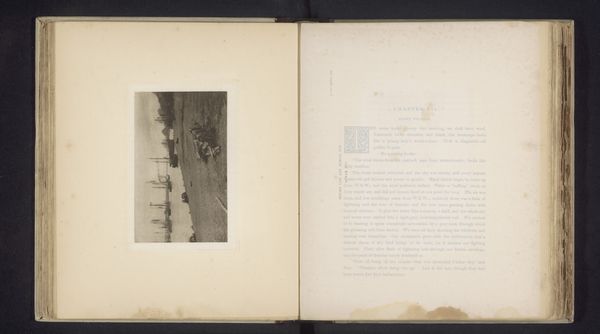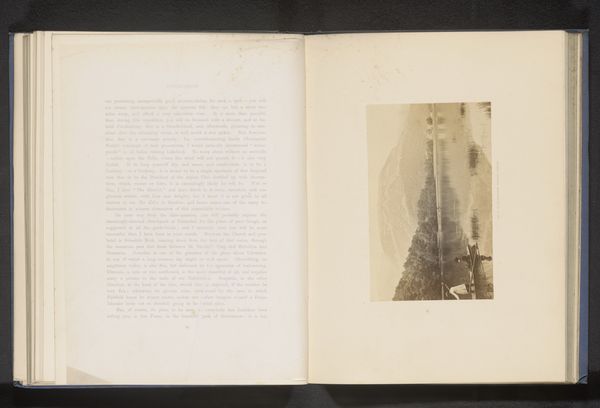
photography
#
photography
Dimensions: height 85 mm, width 124 mm
Copyright: Rijks Museum: Open Domain
Curator: Well, isn’t this fascinating! The photographic print we’re looking at is titled “Gezicht op een meer met een boot met daarachter een berg in Japan,” which roughly translates to "View of a lake with a boat and a mountain behind it in Japan." It's from before 1892 and embodies a hint of Japonisme. What springs to mind when you first see it? Editor: An instant wash of quiet contemplation. It has this very hushed quality; it's like looking at a faded memory, a visual whisper. The monochrome palette, the placid water, the imposing mountain… It's all so delicately balanced. There is something about the framing that makes you feel so quiet. Curator: I think that "visual whisper" perfectly describes it. It reflects the Japonisme art movement. This was a Western embrace of Japanese aesthetics and printmaking, really taking off in the late 19th century. This photograph mimics those qualities. Editor: Right, because in these works, Western artists were essentially taking on Japanese motifs and compositional strategies, in this case the quiet stillness that becomes really evocative. Considering photography's relatively new status then, it is also mimicking the Japanese prints so it adds a sense of depth and sophistication to the photographic medium. The print technology really emphasizes detail, adding another layer to the piece, even without bright colour. Curator: The artist, likely influenced by travelogues and increased accessibility to Japanese art, crafts this landscape with such meticulous attention. One can consider the romanticization of the East at the time, too. It was viewed as an antidote to the industrial surge happening in Europe and America. It reflects the historical dynamics of power between cultures—that exotic gaze. Editor: That push and pull is clear; between admiration, appropriation, idealization… It really invites us to consider what we project onto these ‘untouched’ landscapes, and perhaps onto cultures, as well. I imagine that this photograph offered viewers at the time something profoundly different from the hustle and bustle of the West, that whisper quiet in opposition to all that noise. It holds up a mirror to ourselves in that respect, what we value and perhaps what we lacked. Curator: It surely did! This exploration leaves us with a question lingering in the air about what it means to observe a landscape with an idealized expectation versus experiencing its reality. A compelling proposition, wouldn’t you agree? Editor: Absolutely. These serene photographic prints become, unexpectedly, mirrors, reflecting not only the mountain in the distance but also our own desires and cultural imaginations. Thank you!
Comments
No comments
Be the first to comment and join the conversation on the ultimate creative platform.
